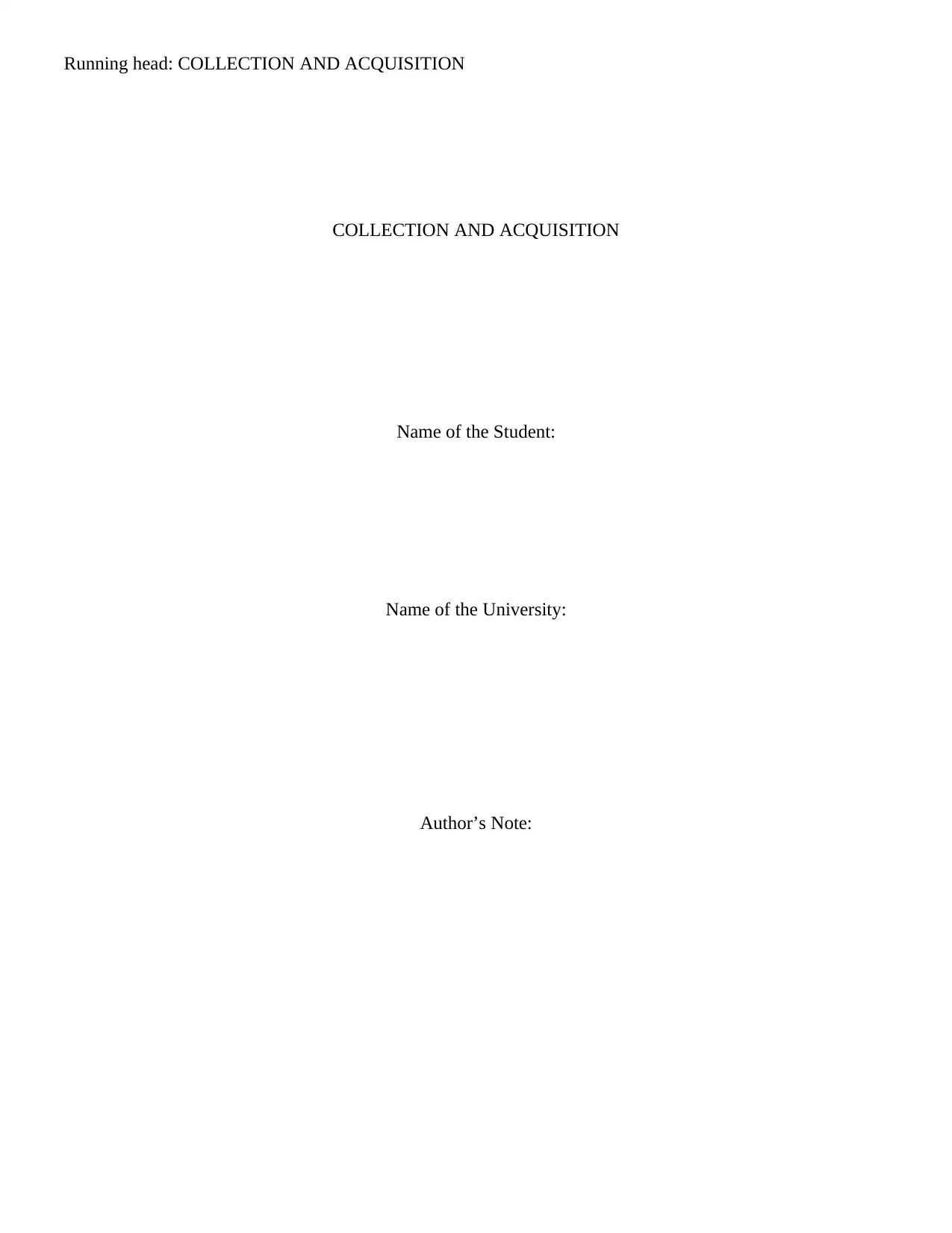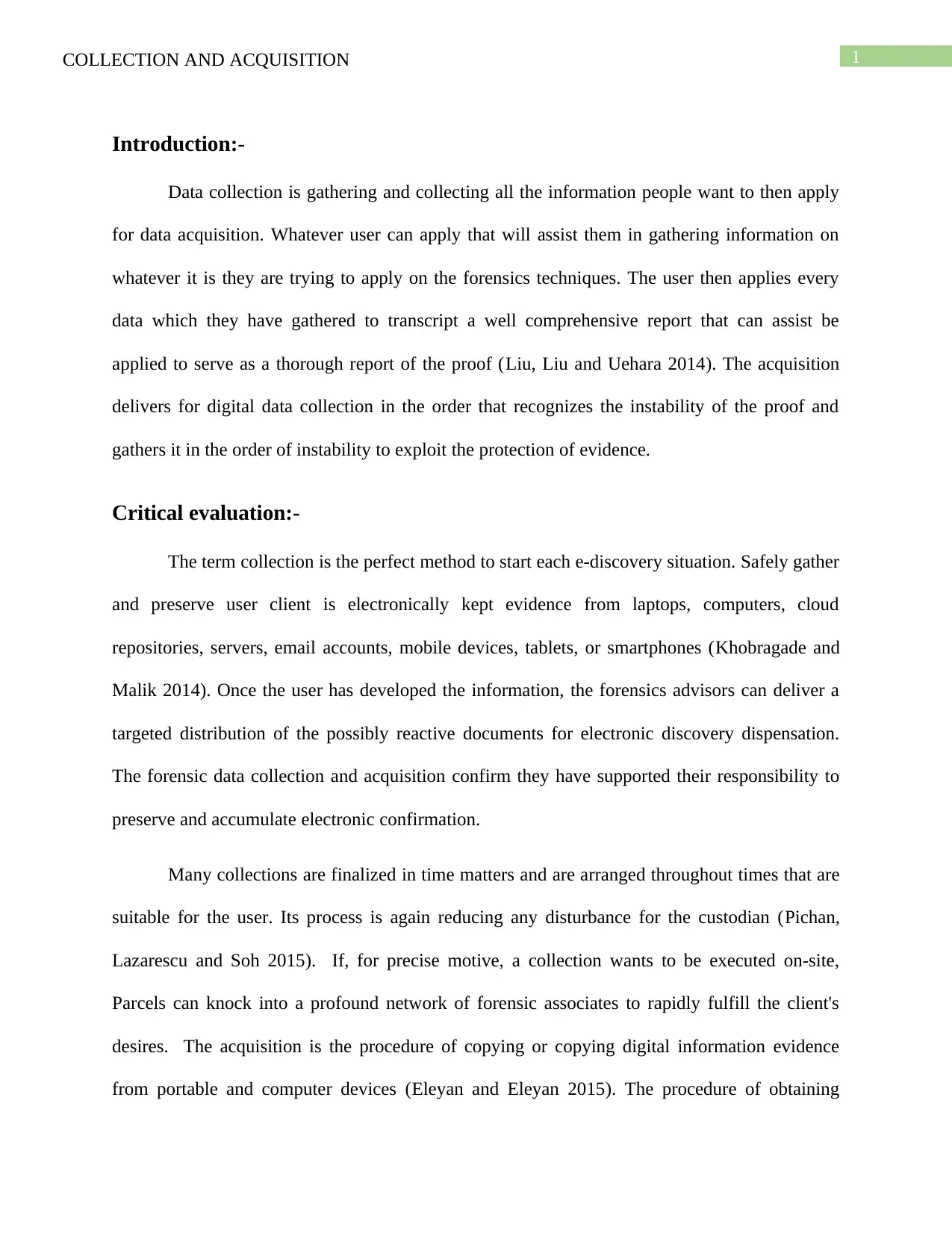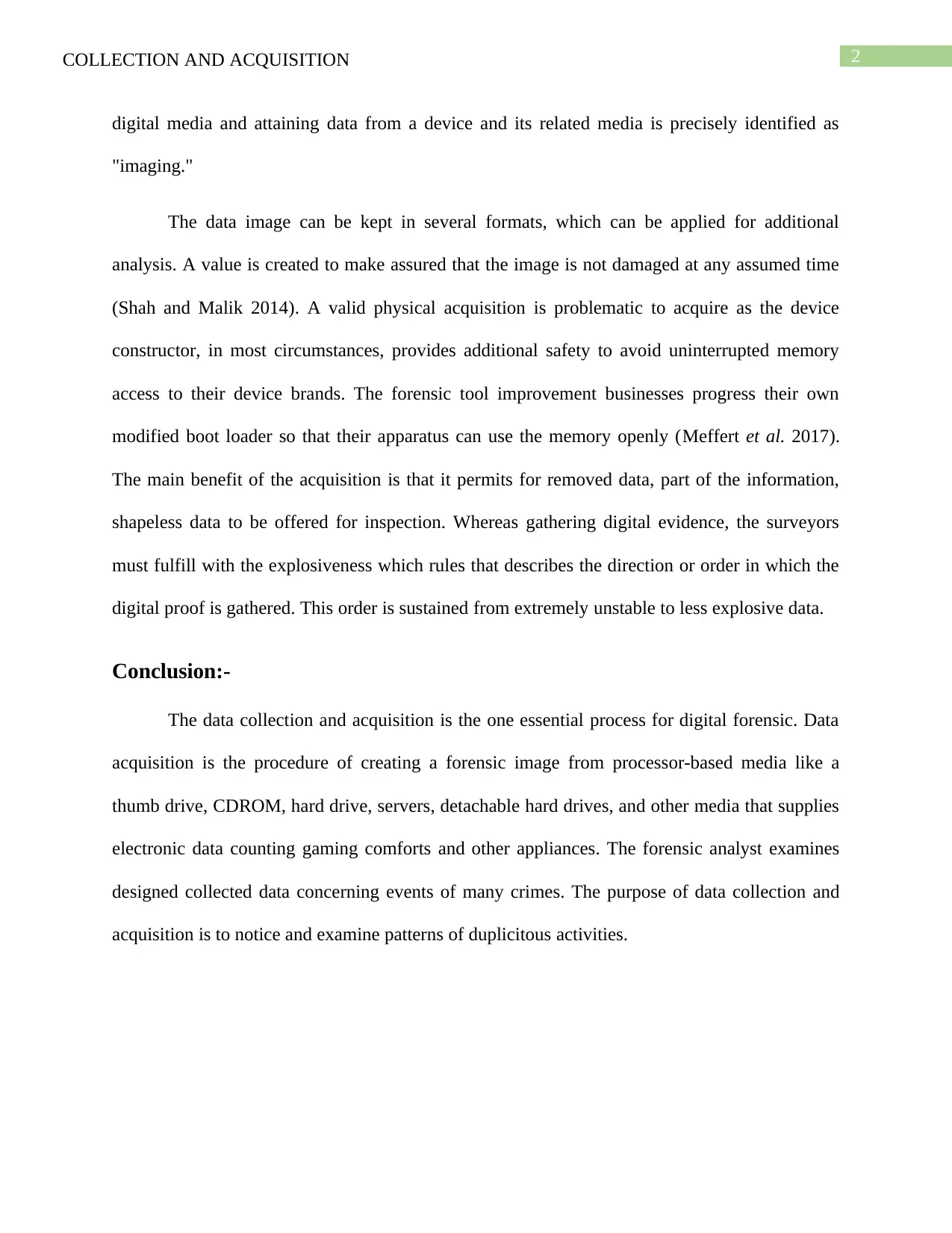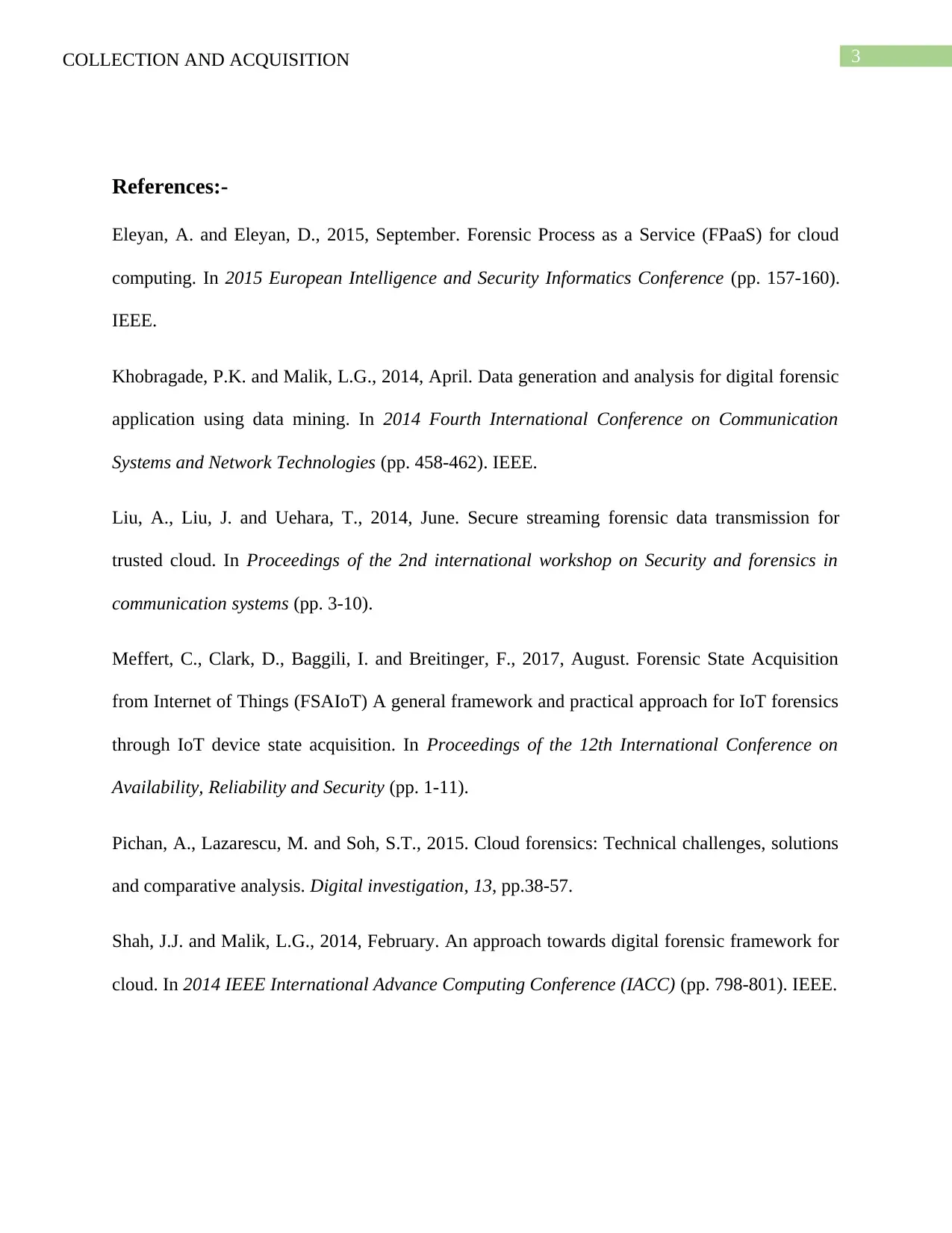Digital Forensics Module: Data Collection and Acquisition Report
VerifiedAdded on 2022/09/12
|4
|896
|23
Report
AI Summary
This report provides an overview of data collection and acquisition within the realm of digital forensics. It explores the initial stages of e-discovery, emphasizing the importance of safely gathering and preserving electronic evidence from various sources like computers, servers, and mobile devices. The report differentiates between data collection and acquisition, highlighting the 'imaging' process for creating forensic images of digital media. It discusses the challenges in physical acquisition and the significance of adhering to the order of volatility when gathering digital evidence, moving from the most to least volatile data. The report concludes by emphasizing the role of data collection and acquisition in identifying and examining patterns of fraudulent activities and its importance in digital forensic investigations. References to relevant research papers and articles support the analysis.
1 out of 4











![[object Object]](/_next/static/media/star-bottom.7253800d.svg)